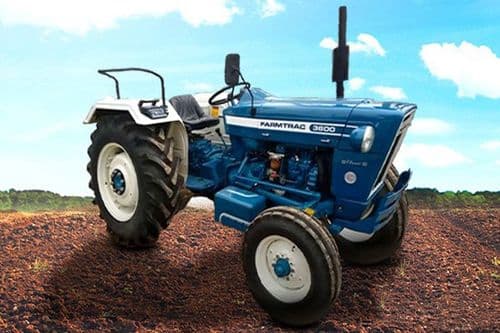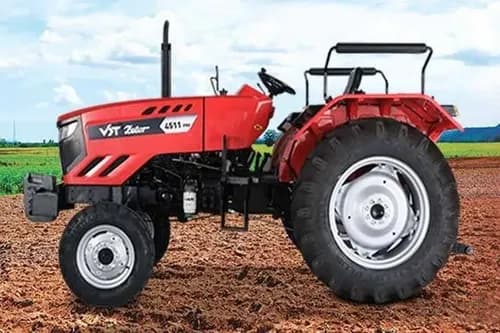Ad
Ad
Top 10 Rice-Producing States in India 2024: Rankings, Insights, Cultivation & Trends

Rice is the most important staple food for 40% of India's population. Not only does it serve as a primary source of carbohydrates and energy, but rice is also an essential crop in the agricultural economy. In India, rice is cultivated across diverse regions, with various climates and soil types supporting its growth.
Let’s discover India's Top 10 Rice-Producing States for 2024. But before going straight to the list, let’s first understand the climatic conditions that are required for rice cultivation, as different rice varieties and types of rice require different cultivation methods.
Also Read: Organic Farming in India: Types, Methods, Benefits & Challenges Explained
The scientific name of rice is Oryza Sativa, commonly referred to as paddy. It is the most consumed food grain in India and is also an integral part of various dishes across the country. Rice production demands specific climatic conditions and soil types to ensure high-quality grains. Let’s Explore the Basics of Rice Farming.
Climatic Conditions Required for Growing Rice
- Temperature: Rice is classified as a Kharif crop, which means it is cultivated during the monsoon season. It requires warm temperatures, with a minimum of 25°C being ideal.
- Water Availability: Since rice needs a lot of water, it is primarily grown in areas with abundant rainfall or irrigation systems. However, in regions with lower rainfall, irrigation is essential to ensure the survival of the crops.
- Soil Type: Soils with a high clay content are ideal for rice farming due to their excellent water retention capabilities.
20 Different Varieties of Rice
Rice comes in many different varieties, each with its distinct characteristics. Here are 20 of the most popular types of rice:
- Brown Rice
- Basmati Rice
- Jasmine Rice
- Mogra Rice
- Bamboo Rice
- Wild Rice
- Black Rice
- Red Rice
- Red Cargo Rice
- Indrayani Rice
- White Rice
- Sushi Rice
- Purple Thai Rice
- Bomba Rice
- Glutinous Rice (Sticky Rice)
- Arborio Rice
- Valencia Rice
- Sona Masuri
- Samba Rice
- Rosematta Rice
Types of Rice Cultivation
Rice cultivation is broadly categorized based on the growing environment. The three major types are:
- Wet Cultivation: Wet cultivation or farming is practiced in areas where there is sufficient rainfall. The fields are flooded with water, and rice is transplanted into the soil. This type of cultivation is practiced primarily in regions like Assam and West Bengal.
- Red Rice Cultivation: Red rice varieties are often grown in challenging conditions such as sandy soils, saline environments, and regions prone to drought. States like Kerala, Karnataka, and Tamil Nadu are known for the cultivation of red rice.
- Black Rice Cultivation: Black rice requires warm weather and longer growing seasons. Manipur is one of the few states that produce black rice, which is also known for its nutritional benefits.
Also Read: Farmer's Guide to Controlling Pokka Disease in Sugarcane
Top 10 Rice Producing States in India
Let's now explore the top 10 rice-producing states in India, highlighting their contribution to the country's total rice output.
1. West Bengal
Rice Production: 15.75 million tonnes

West Bengal is the leading rice-producing state in India, contributing significantly to the national output. Despite occupying only 2.78% of the country's cultivable land, the state produced approximately 15.75 million tonnes of rice of India's total rice production in 2024. West Bengal produced 14.80 million tonnes of rice in 2014-15.
The state's favorable climatic conditions and fertile lower Gangetic plains, particularly in districts like Midnapore, Bardhaman, 24 Parganas, Birbhum, and other areas, facilitate extensive rice cultivation. The primary varieties cultivated in West Bengal include Boro, Aman, and Aus, making it a vital player in India’s rice agriculture. Varieties such as Swarna, IR36, and Sona Masuri are also cultivated by farmers here, garnering attention both domestically and internationally for their quality.
2. Uttar Pradesh
Rice Production: 12.5 million tonnes

Uttar Pradesh holds the position of the second-largest rice producer in India, with rice cultivated across 70 districts. Out of which 7 districts comes under the high productivity group, 29 districts comes under the medium productivity group, 26 districts comes under medium-low productivity group, 5 under low productivity group and 3 under very low productivity group.
The state is characterized by a diverse productivity spectrum, classified into various groups based on yield levels. In the high productivity group, seven districts yield more than 2,500 kg/ha, accounting for about 10.4% of the total rice acreage of 56.91 lakh hectares.
Key districts like Bareilly, Muzaffarnagar, and Gorakhpur contribute to this output. Popular rice varieties in Uttar Pradesh include Jaya, Panth-4, Mahsuri, and Pusa Basmati. With rice production accounting for nearly a quarter of the state's cultivated land, the importance of this crop to the local economy is just profound.
3. Punjab
Rice Production: 11.82 million tonnes

As the third-largest rice-producing state in India, Punjab is well known for its high-yielding varieties, primarily Basmati. The state cultivates rice on approximately 2.6 million hectares, relying heavily on irrigation due to the predominantly arid conditions. However, challenges such as water scarcity, soil salinity, and the presence of bacterial leaf blights hinder sustainable production. Despite these issues, Punjab excels in rice yield per hectare, with major rice-producing districts including Patiala, Firozpur, and Ludhiana. Farmers have adapted practices like crop rotation and using perennial irrigation to enhance productivity.
4. Tamil Nadu
Rice Production: 7.98 million tonnes
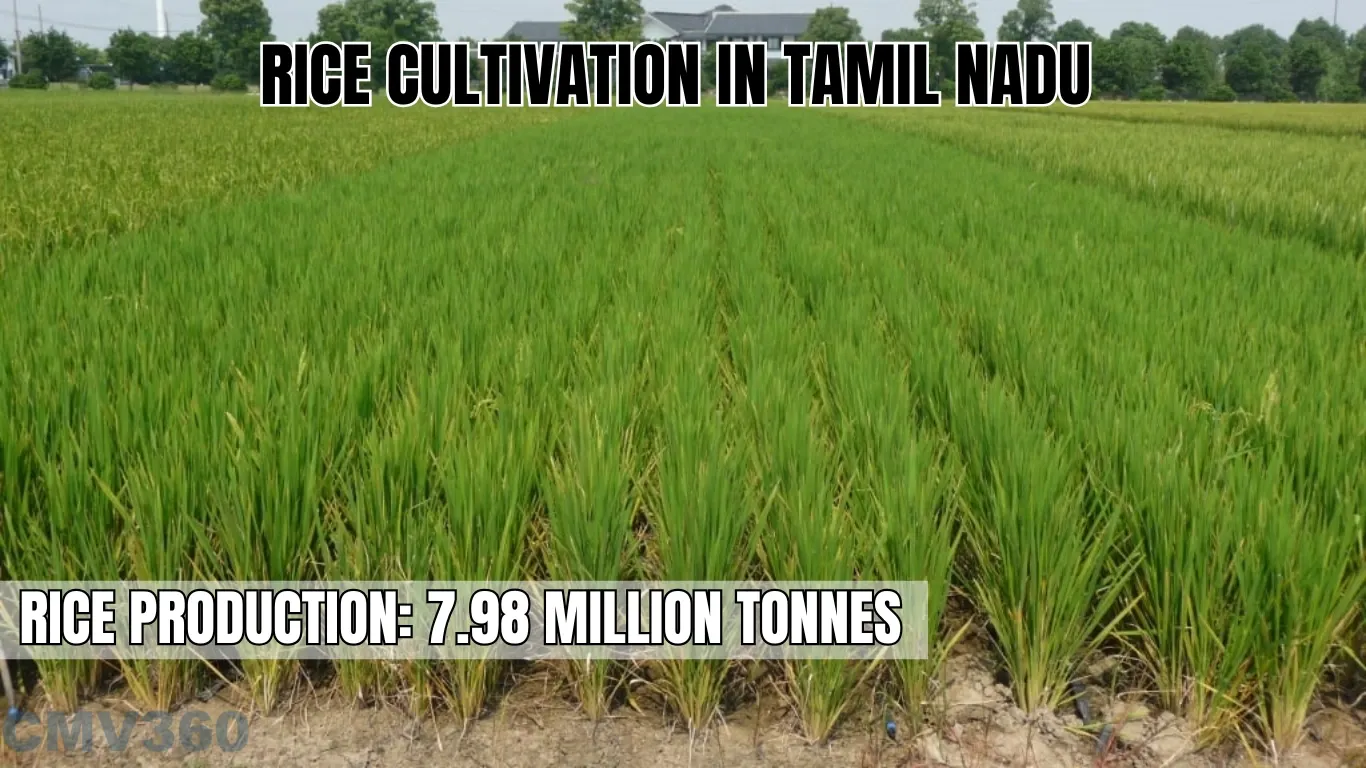
Tamil Nadu ranks fourth in rice-producing states in India and is the largest rice-producing state in southern India. The state cultivates rice on around 2.2 million hectares, with an average yield of approximately 3,900 kg per hectare. Major varieties grown include Amsipiti Dhan, Aravan Kuruva, and Akshayadhan.
Key rice-producing districts include Tiruvarur, Thanjavur, Tiruvannamalai, and Villupuram. The state's emphasis on quality rice production and efficient farming techniques contributes significantly to its overall agricultural output.
5. Andhra Pradesh
Rice Production: 7.49 million tonnes
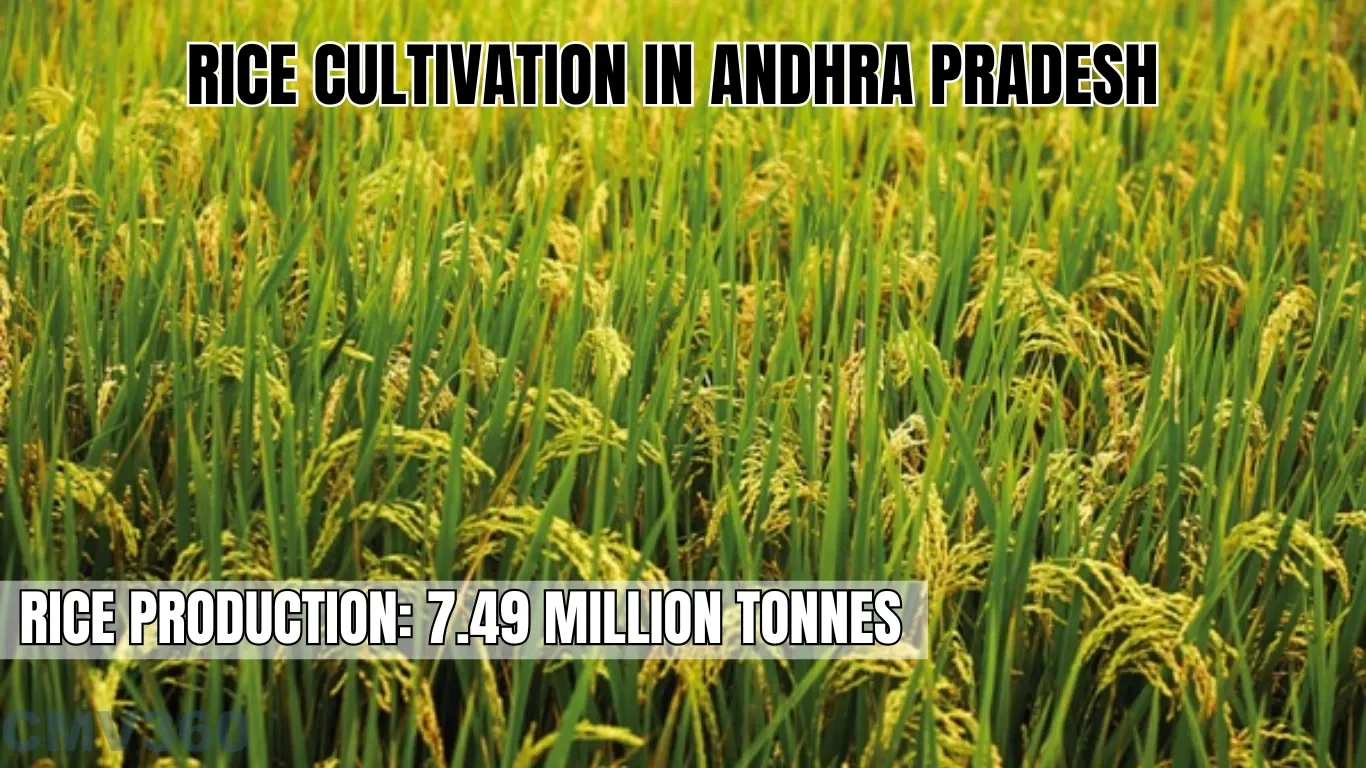
Andhra Pradesh is the fifth-largest rice producer, with production levels increasing from 7.45 million tonnes in 2017 to 8.64 million tonnes in 2020. Rice is cultivated in 22 districts, with West Godavari, Krishna, and East Godavari being the most productive. The state's rice varieties include Samael, Samba Madhuri, and Sarvani. The favorable climatic conditions and irrigation practices have facilitated a steady growth rate in rice production, making it a key contributor to India's agricultural landscape.
Also Read: Dragon Fruit Cultivation in India: Profitable Farming with Health Benefits
6. Bihar
Rice Production: 6.5 million tonne
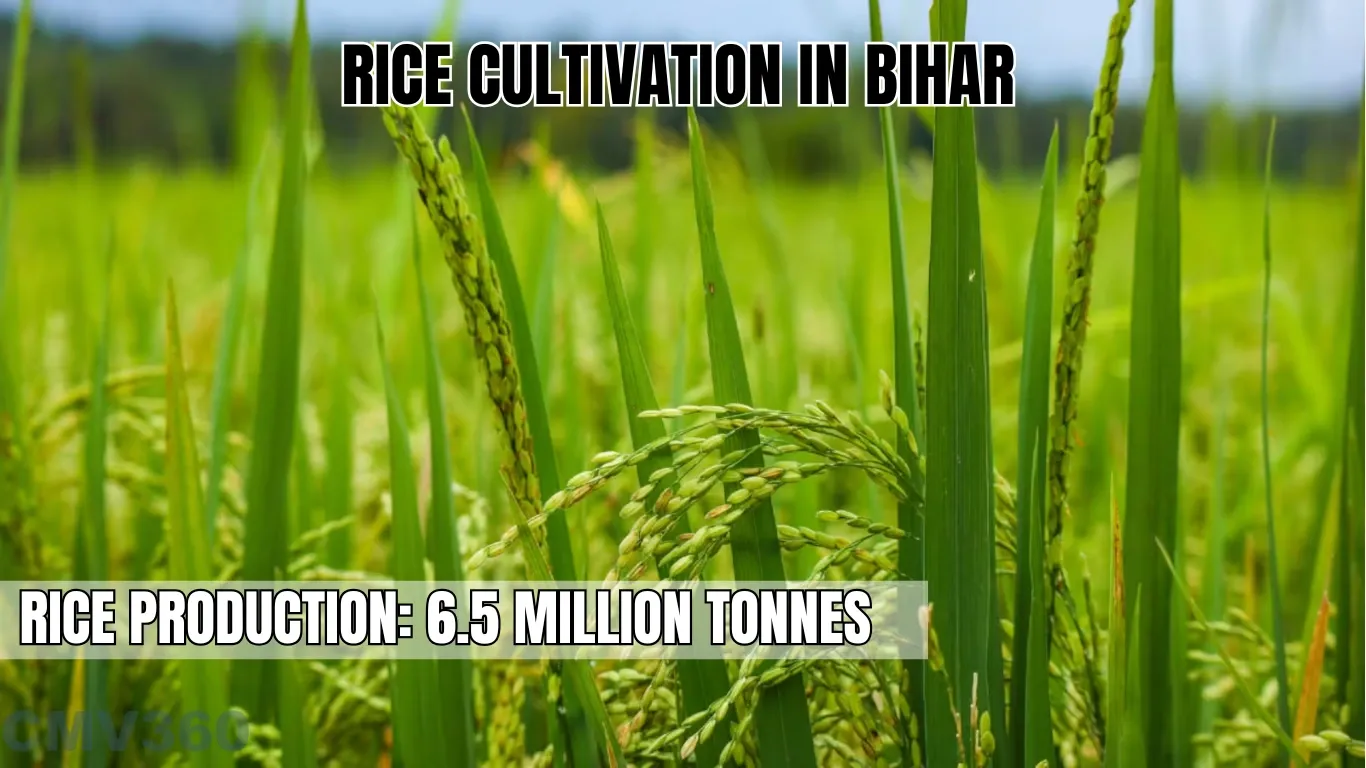
Bihar ranks sixth in rice production, and the state is increasingly implementing modern agricultural technologies to enhance both the quality and quantity of its rice yield. Key rice varieties include Gautam, Dhanalakshmi, Richhariya, and Saroj rice in winter, and Gautam Pusa-33, Pusa-2-21, CR 44-35 (Saket-4), and Prabhat (a 90-day variety) in summer. The focus on technological advancements is expected to further improve Bihar's rice production capabilities in the coming years.
7. Chhattisgarh
Rice Production: 6.09 million tonnes
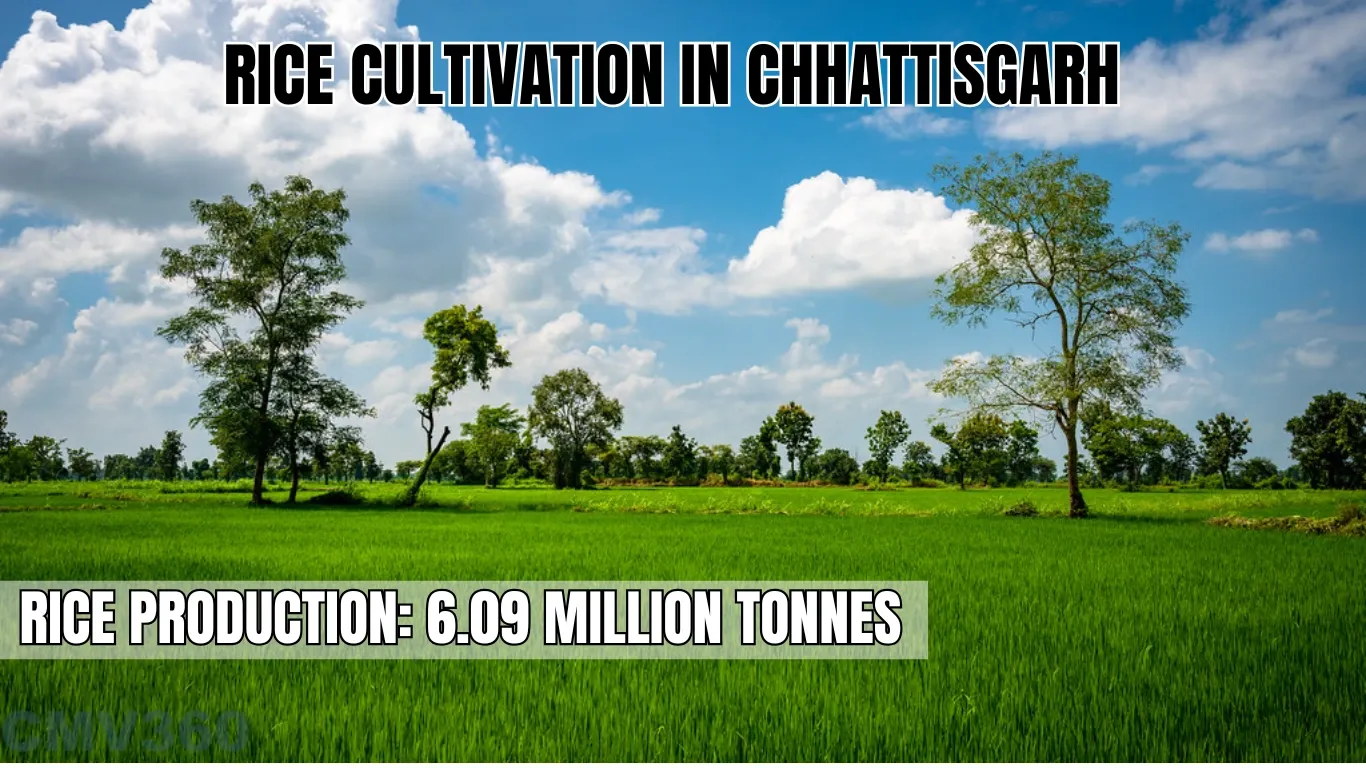
Chhattisgarh is known as the "Rice Bowl of India," producing approximately 6.09 million tonnes of rice. The state is distinguished by its cultivation of over 2,000 different rice varieties. Chhattisgarh and neighboring Odisha lead in the production of Chudi paddy, Turia Kabri, Lal Dhan, and red bangle paddy. The diverse genetic varieties cultivated here contribute to the state's robust rice production profile.
8. Odisha
Rice Production: 5.87 million tonnes

Odisha is the eighth-largest rice producer in India, with rice being the most significant crop in this state. It occupies around 69% of the cultivated land and 63% of the total area under food grains. As a staple food for the majority of the population, rice production and productivity greatly influences Odisha's economy. The focus on increasing yield and sustainable agricultural practices is vital for the state's development.
9. Assam
Rice Production: 5.14 million tonnes

Assam ranks ninth in rice-producing states, with an output of 5.14 million tonnes. The state's rice cultivation showcases significant genetic diversity, with farmers achieving an average yield of over 1,700 kg per acre. Major rice-producing districts include Kamrup, Nalbari, and Nagaon, where a wide range of rice varieties is cultivated, reflecting the region's rich agricultural heritage.
10. Haryana
Rice Production: 4.14 million tonnes
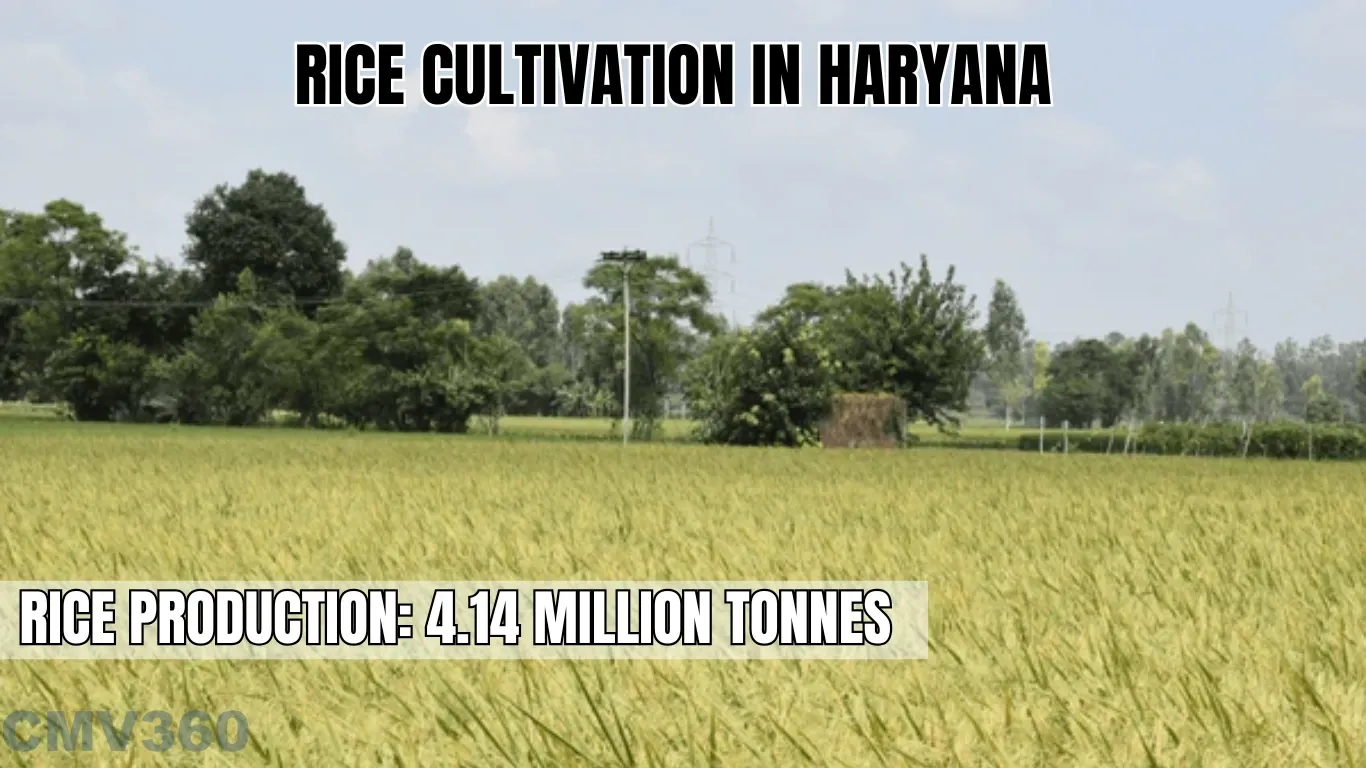
Haryana rounds out the list as the tenth-largest rice-producing state, with a production of approximately 4.14 million tonnes. The state benefits from a well-established irrigation system that supports rice cultivation on 1.35 million hectares of land. Haryana's agriculture is characterized by the cultivation of high-yielding varieties, ensuring its significant contribution to the national rice production figures.
Also Read: Top 10 Most Profitable Farming Ventures in India
List of Top 10 Largest Rice Producing States in India 2024
India’s Role in Global Rice Production
India is the second-largest rice producer globally, producing over 129 million tonnes of rice in 2022. China holds the top spot, producing 148 million tonnes of rice. India's high rice output ensures its dominance in the global rice market, with states like West Bengal, Punjab, and Uttar Pradesh playing key roles in the country’s rice production.
India exports a variety of rice globally, including premium quality Basmati rice. The country's favorable climate, diverse rice varieties, and government support have enabled it to meet both domestic and international demand.
Challenges in Rice Production in India
Despite being a major rice producer, India faces several challenges in its rice production:
- Climate Change: Unpredictable weather patterns, rising temperatures, and irregular rainfall have disrupted rice farming practices. Farmers are now adopting climate-resilient rice varieties like Swarna Purvi Dhan to tackle these challenges.
- Water Management: Efficient usage of water is critical for rice cultivation. Floods and droughts create issues in water management, affecting rice yields.
- Pests and Diseases: Pest attacks and diseases like bacterial leaf blight often damage crops. Biological control agents, such as Bacillus subtilis and Trichoderma, are being used to protect rice fields.
Also Read: How Intercropping Can Help Sugarcane Farmers Increase their Income
CMV360 Says
Rice is an integral part of India’s agriculture and food culture. With several states contributing to its massive production, India continues to play a significant role in feeding its population and exporting rice globally. The diverse rice varieties and cultivation methods across different regions highlight the importance of rice in the country's agricultural landscape.
Features & Articles
Comprehensive Guide to Tractor Transmission System: Types, Functions, and Future Innovations
Learn about tractor transmission types, components, functions, and selection factors to enhance efficiency, performance, and agricultural productivity....
12-Mar-25 09:14 AM
Read Full NewsModern Tractors and Precision Farming: Transforming Agriculture for Sustainability
Precision farming enhances agriculture by integrating GPS, AI, and modern tractors for sustainable, efficient, and productive farming practices in India....
05-Feb-25 11:57 AM
Read Full NewsTop 10 Tractors Under 30 HP in India 2025: Guide
Top 10 tractors under 30 HP in India offer efficiency, affordability, and power, ideal for small farms with diverse agricultural needs....
03-Feb-25 01:17 PM
Read Full NewsNew Holland 3630 TX Super Plus vs Farmtrac 60 PowerMaxx: Detailed Comparison
Compare New Holland 3630 and Farmtrac 60 tractors by specs, price, and features to find the perfect fit for your farm....
15-Jan-25 12:23 PM
Read Full NewsSwaraj 735 FE Vs Eicher 380 2WD Prima G3: Detailed Comparison
The Swaraj 735 FE and Eicher 380 2WD Prima G3 are reliable, powerful tractors suited for various farming tasks....
14-Jan-25 09:41 AM
Read Full NewsHow to Choose the Perfect Tractor for Your Farm: A Comprehensive Guide
Choose the right tractor by assessing farm needs, horsepower, efficiency, comfort, and budget to enhance productivity and savings....
09-Jan-25 09:43 AM
Read Full NewsAd
Ad
As featured on:


Registered Office Address
Delente Technologies Pvt. Ltd.
M3M Cosmopolitan, 12th Cosmopolitan,
Golf Course Ext Rd, Sector 66, Gurugram, Haryana
pincode - 122002


















